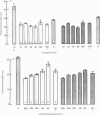Abstract
1. Rat soleus muscle was denervated by sciatic transection and electrically stimulated for periods of between 3 and 9 weeks with intermittent 1 s bursts of pulses. Most of the bursts were either repeated every 90 s and pulses within them had frequencies between 10 and 100 Hz, or had a frequency of 50 Hz and were repeated at intervals between 60 and 600 s. Comparisons were made with continuous stimulation at 10 Hz. 2. At the end of the period of stimulation, isometric twitches and tetani were measured and, in a proportion, also isotonic shortening velocity. 3. Isometric twitch duration (contraction and relaxation) decreased with time of stimulation. Very similar effects were seen in all animals in which intermittent stimulation had been used. There was a significant relationship between the change in twitch duration and the frequency used within the bursts of chronic stimulation, with slightly larger effects at frequencies of 40 and 60 Hz. The lowest burst repetition rate produced the largest effects. 4. It was confirmed that similar changes were found in denervated muscles that were not stimulated, although these changes were smaller and developed more slowly. 5. The extreme loss of tetanic tension induced in the muscle by denervation was reduced by chronic stimulation, with no significant difference between different regimes, although there were small differences which showed the same patterns of effectiveness described for twitch durations. 6. Continuous stimulation at 10 Hz maintained the twitch contraction and relaxation phases at the values found 3 weeks after denervation, that is it prevented secondary shortening of the twitch. Continuous stimulation reduced tension loss but was, perhaps, less effective than intermittent stimulation. 7. Twitch-tetanus ratio increased with denervation with little spontaneous reversal later. Stimulation at all frequencies reduced the ratio, but it did not reach normal values. 8. Isotonic shortening velocity was measured in many of the muscles. Maximum velocity was estimated and normalized by muscle length.(ABSTRACT TRUNCATED AT 400 WORDS)
Full text
PDF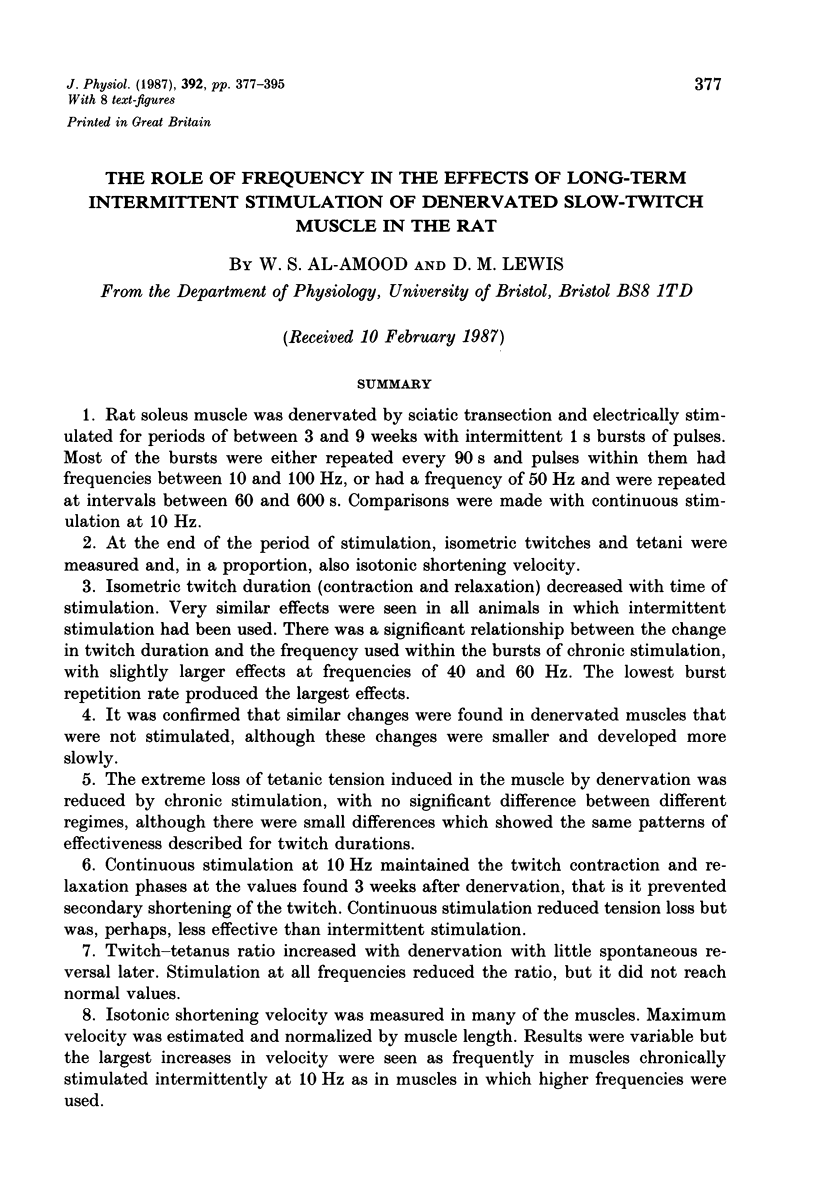
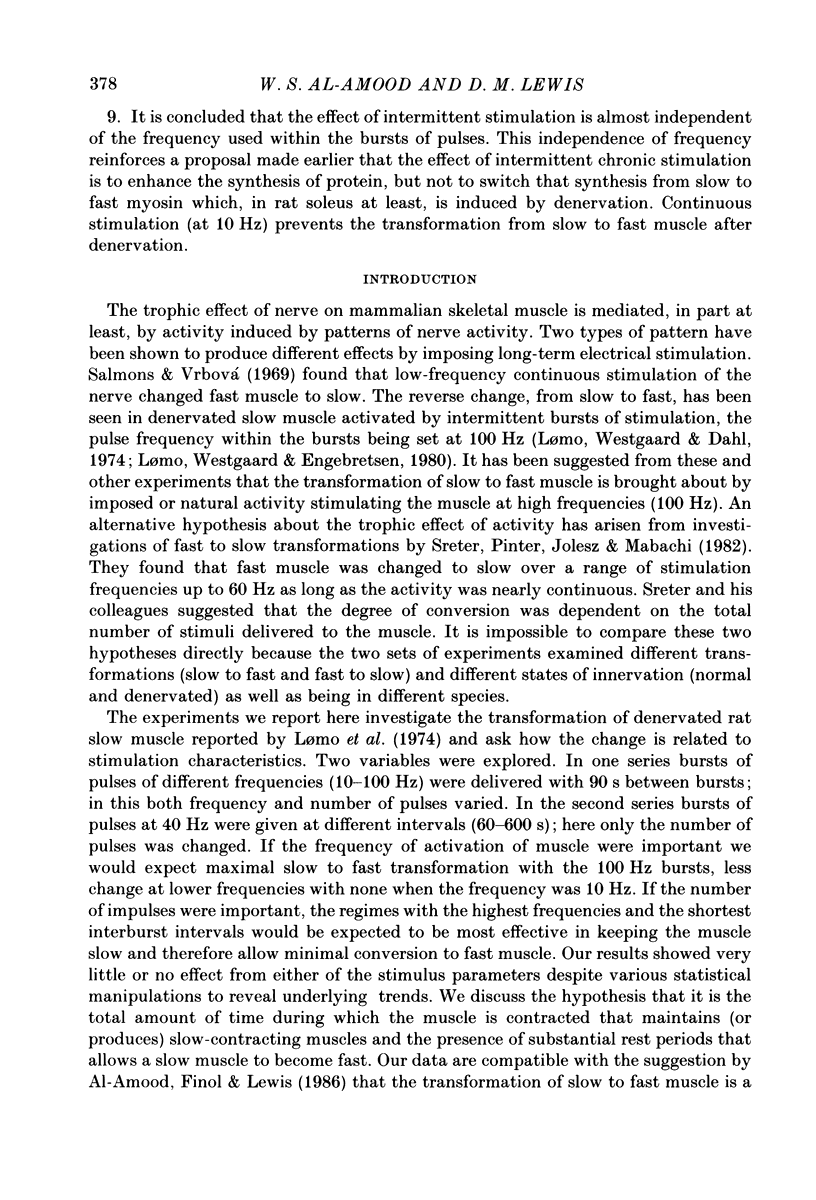
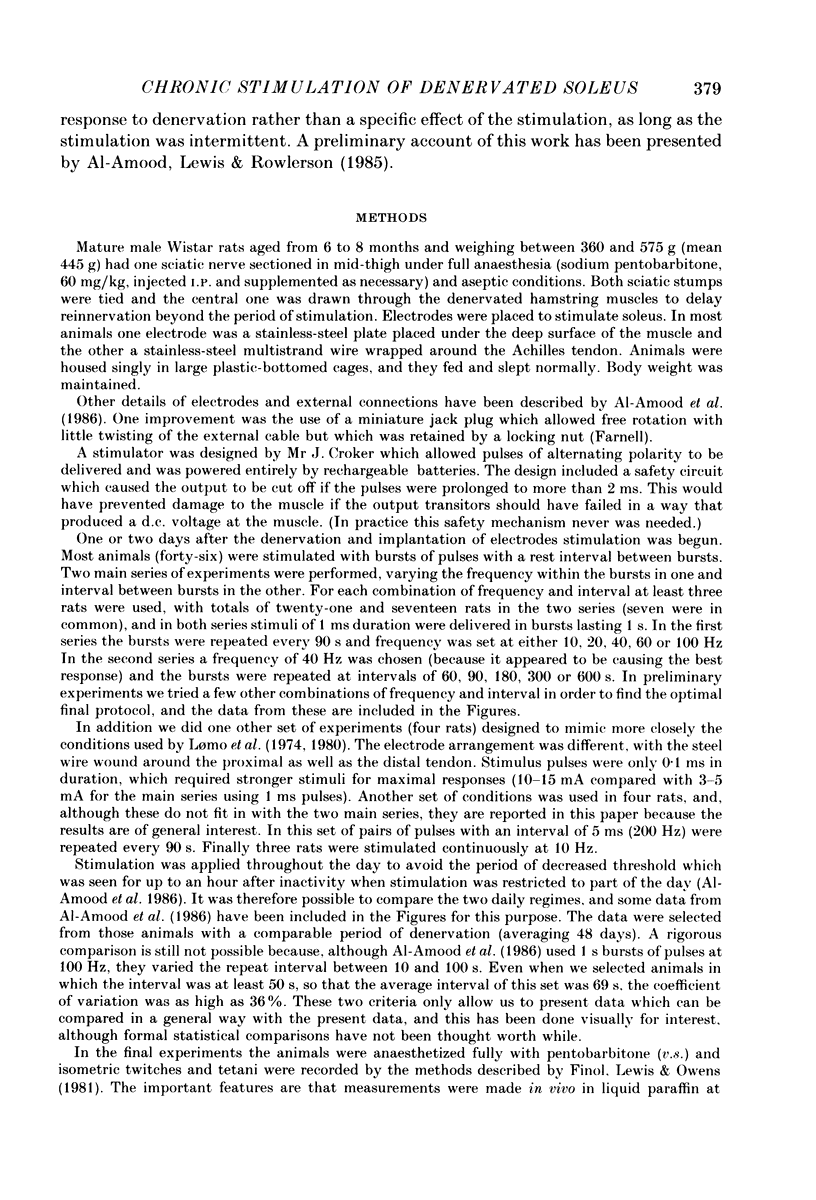
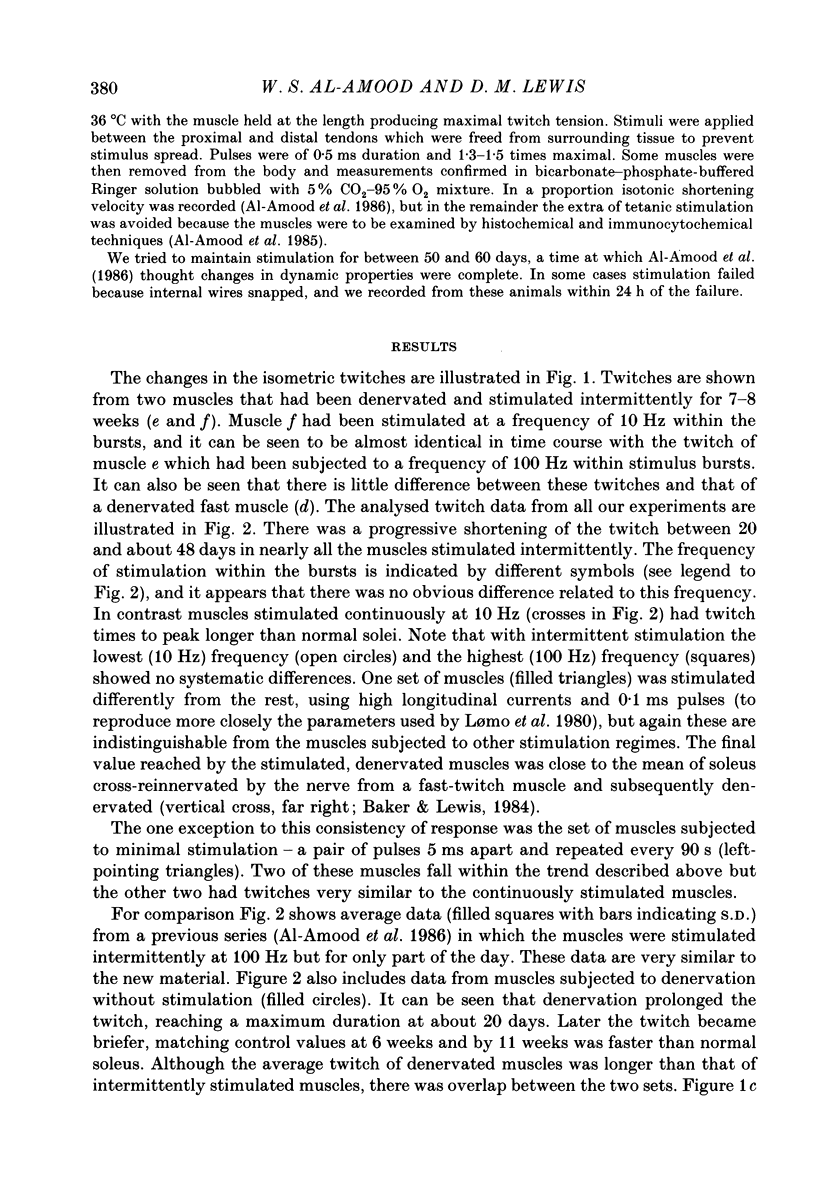
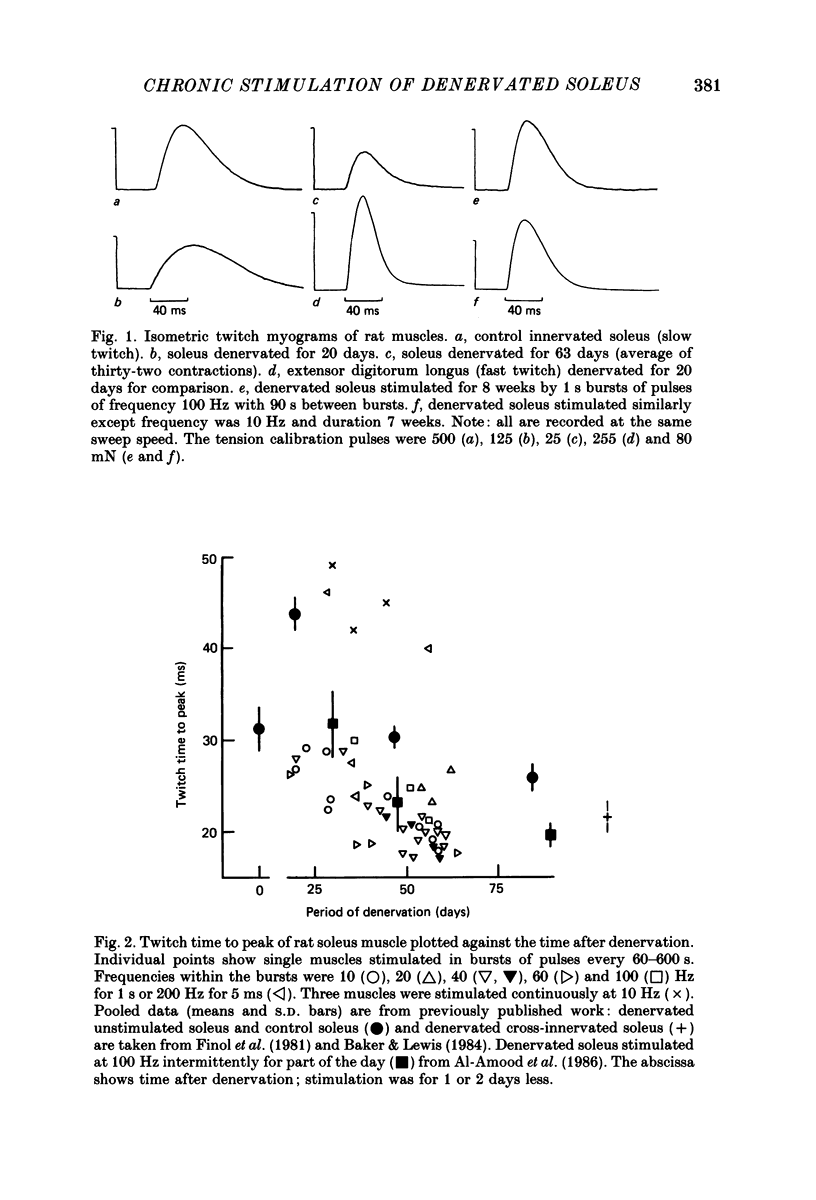
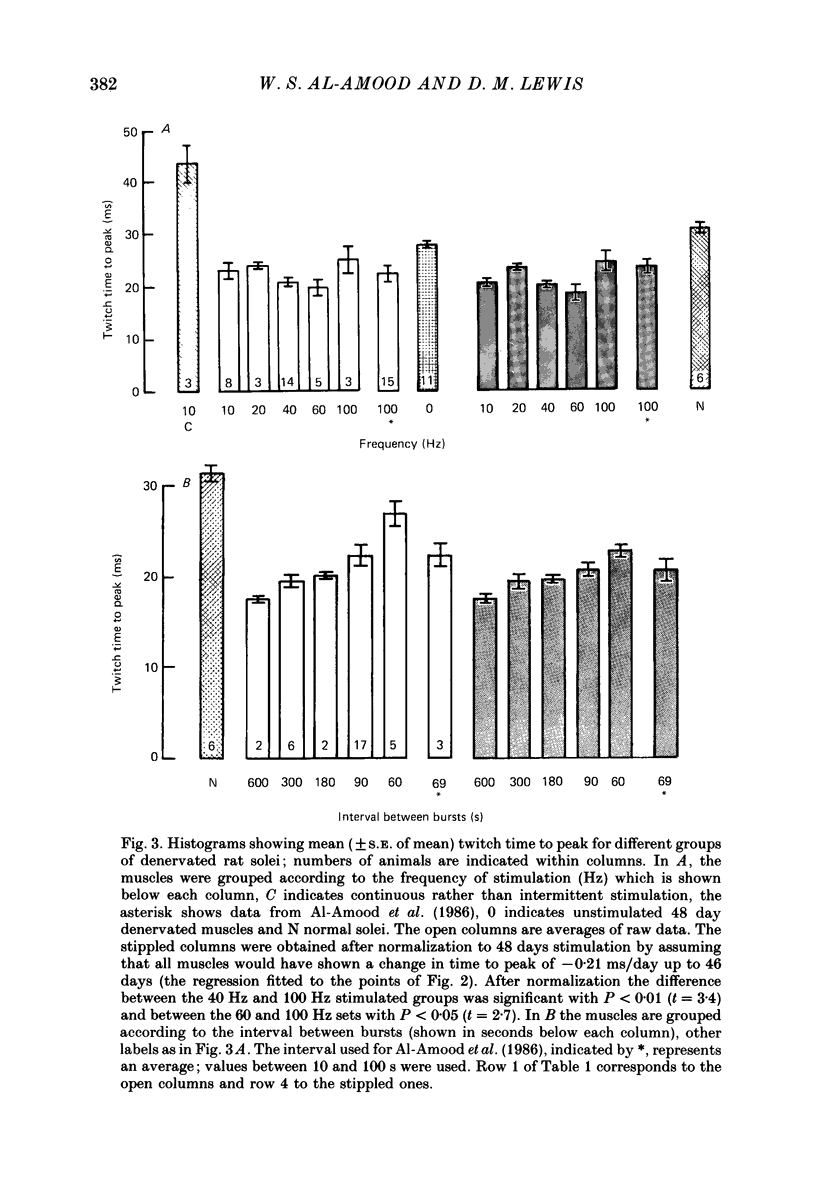
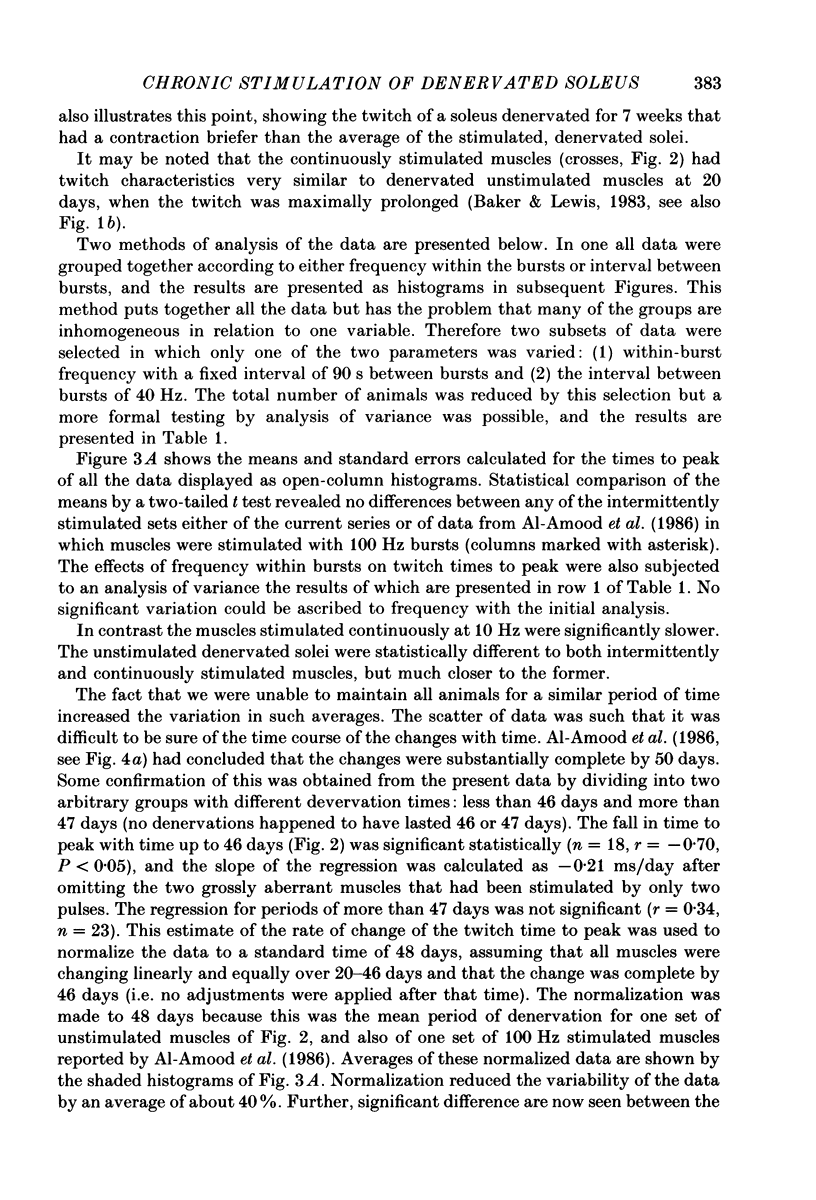
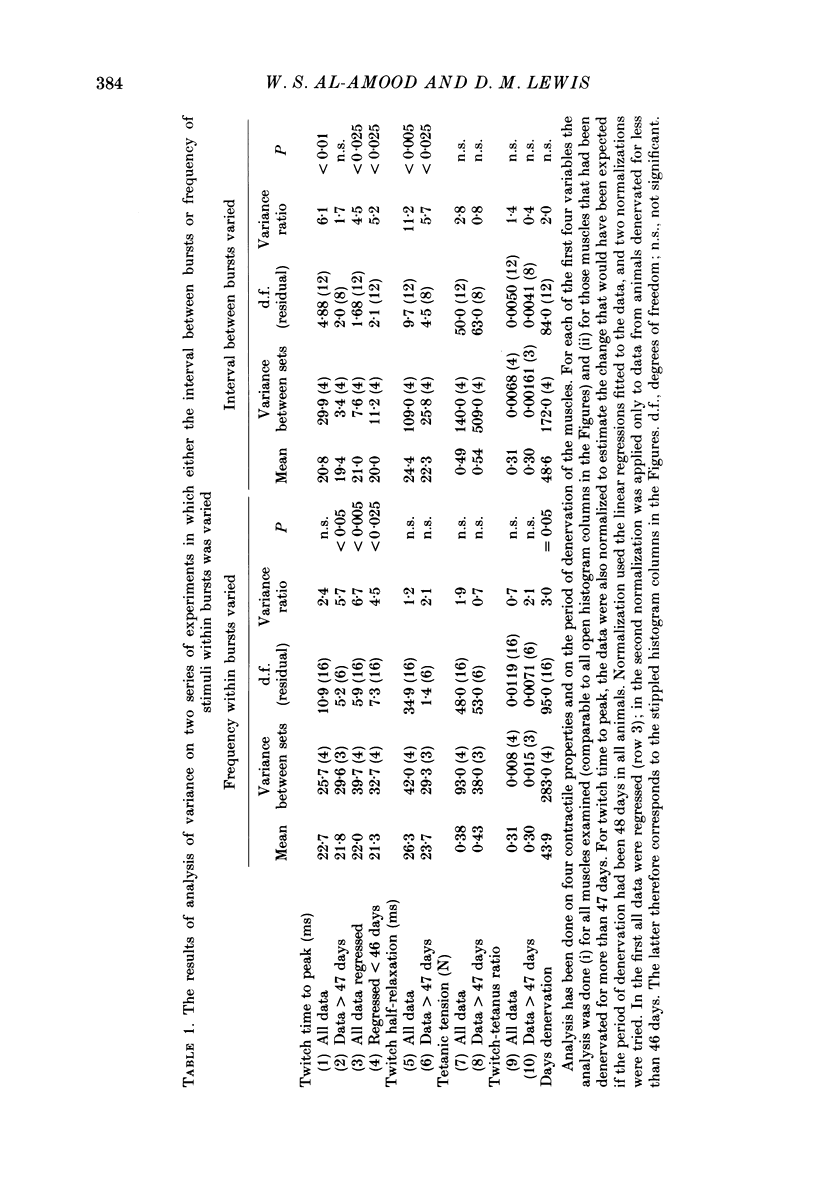
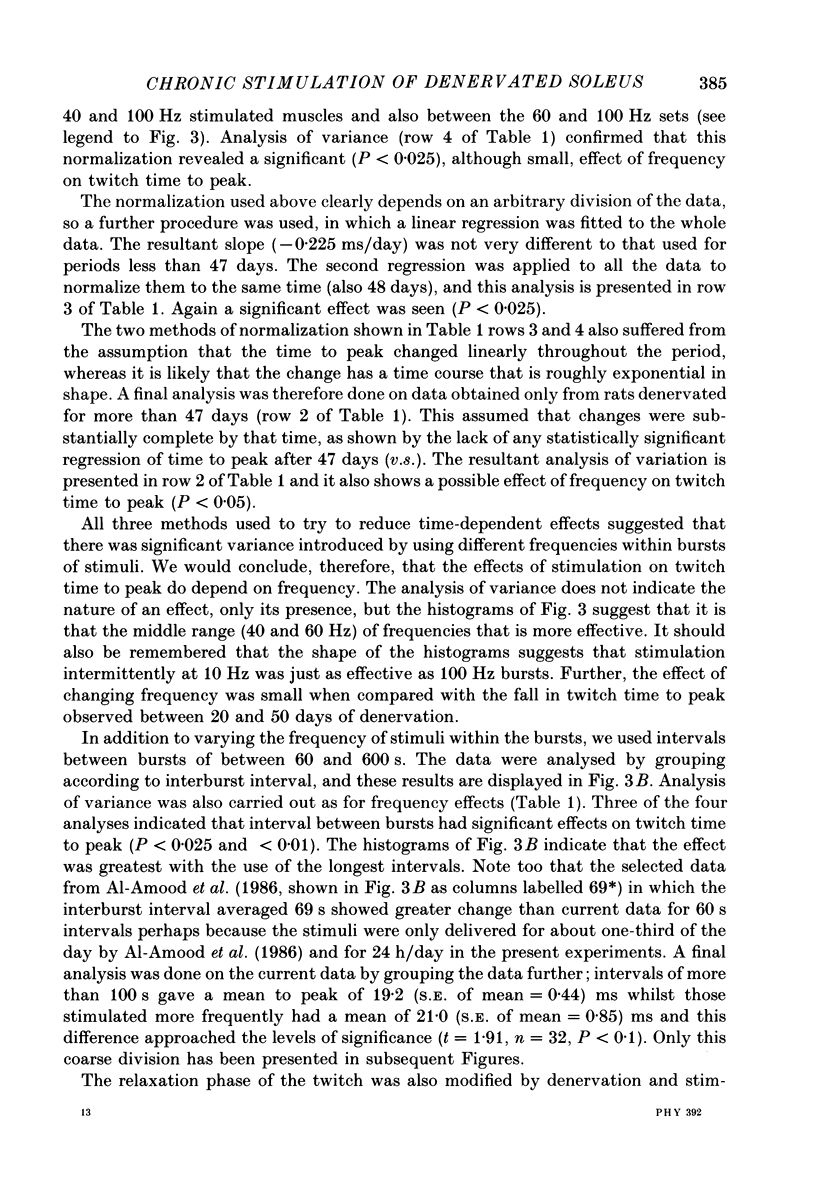
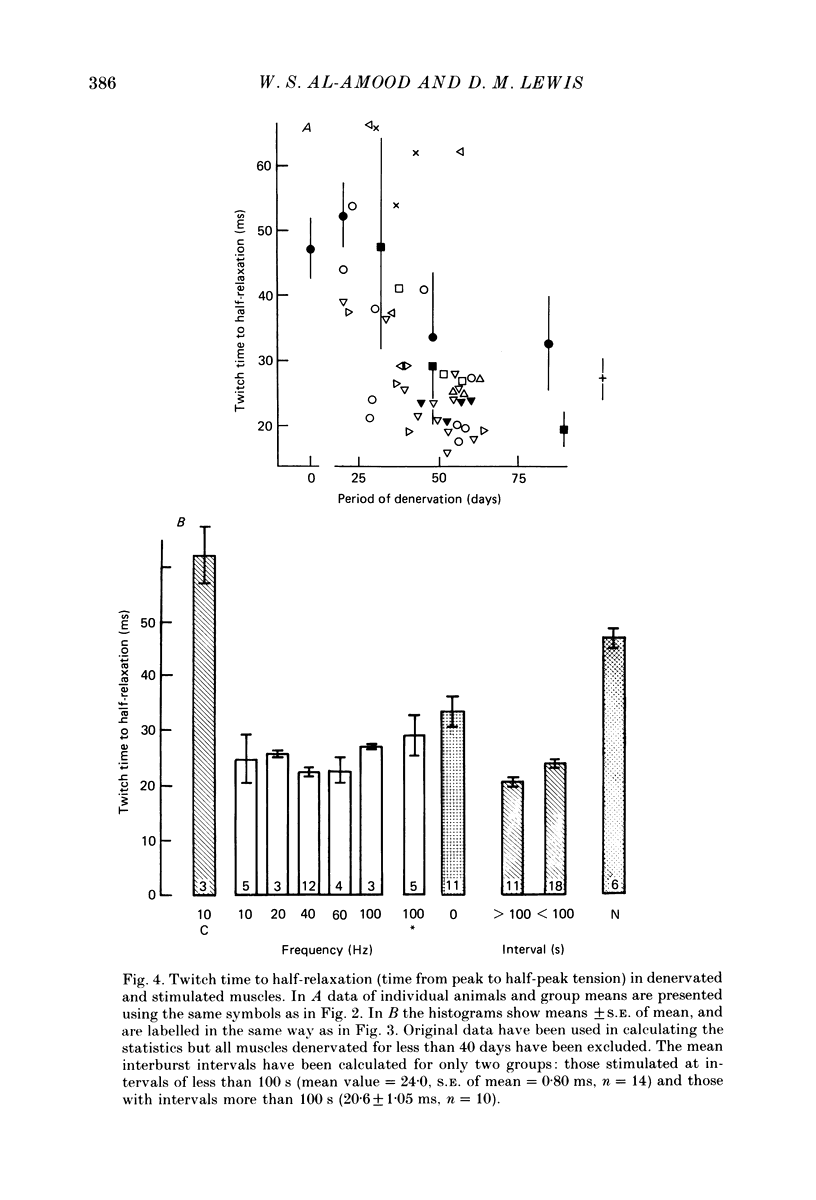
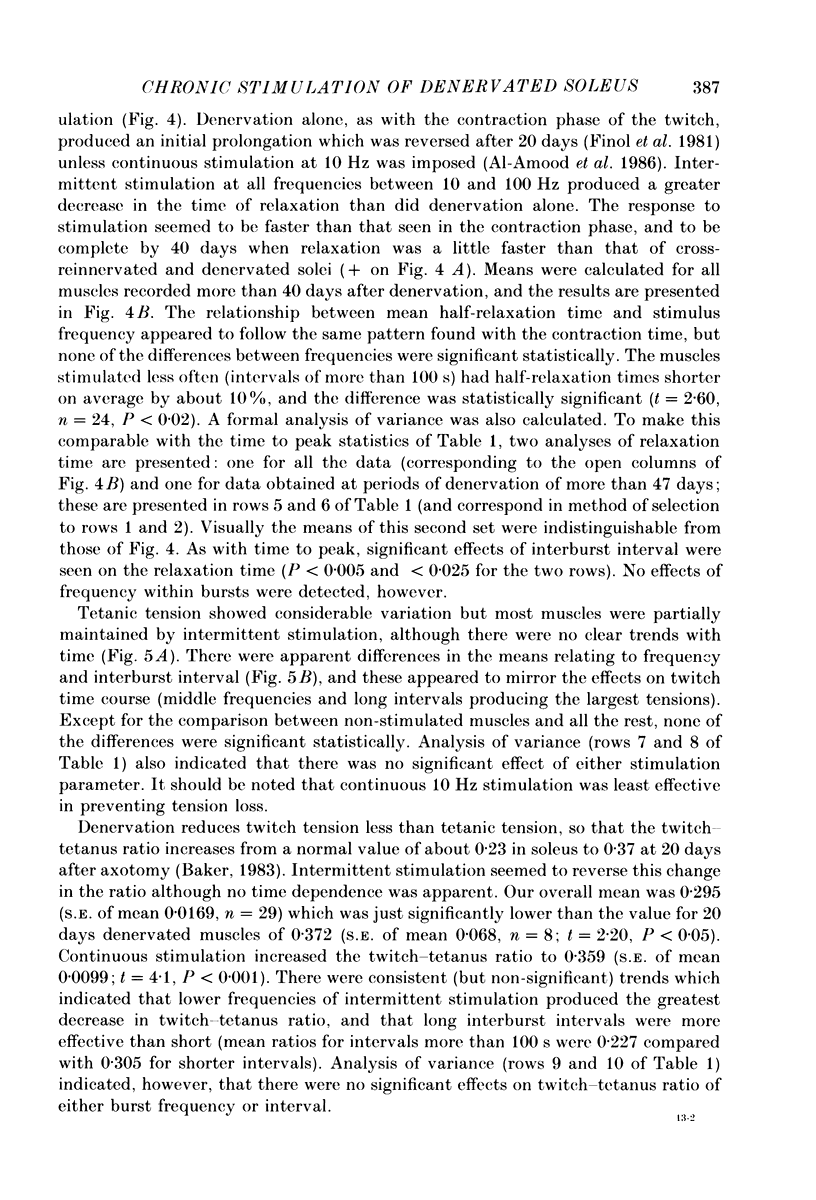
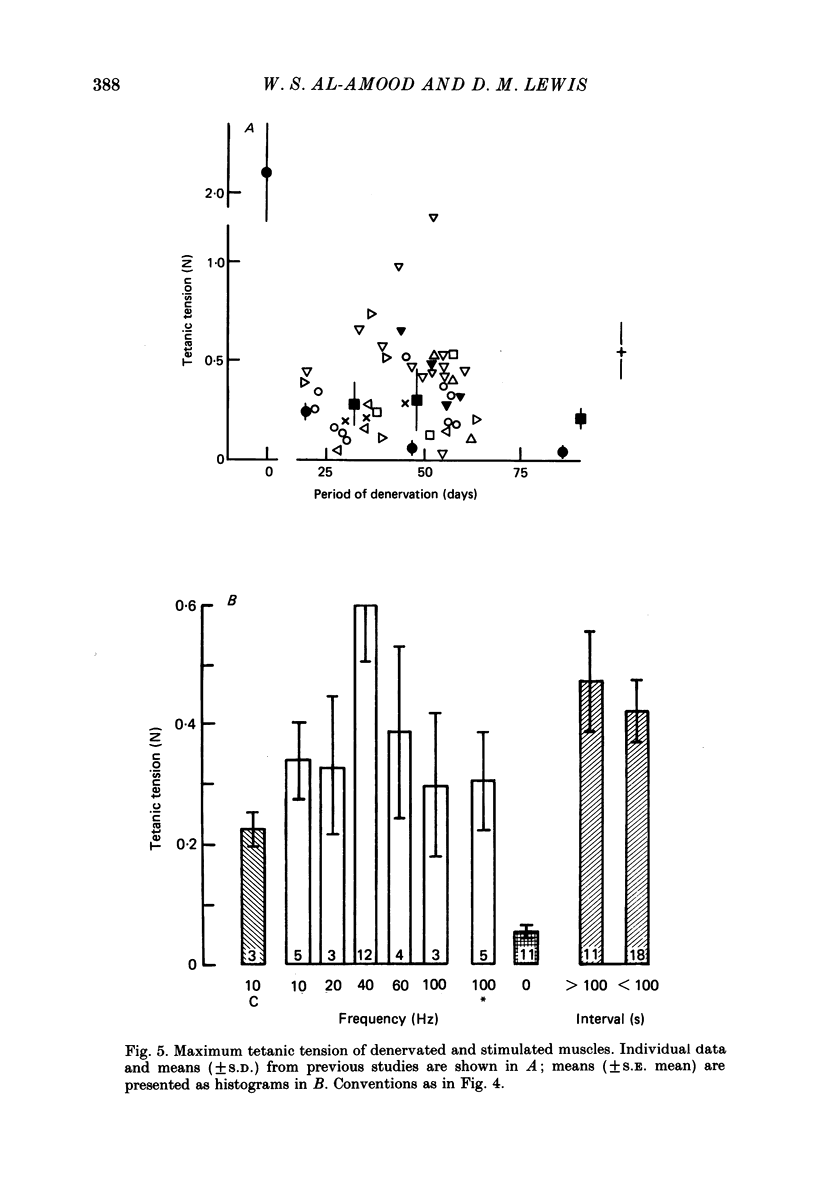
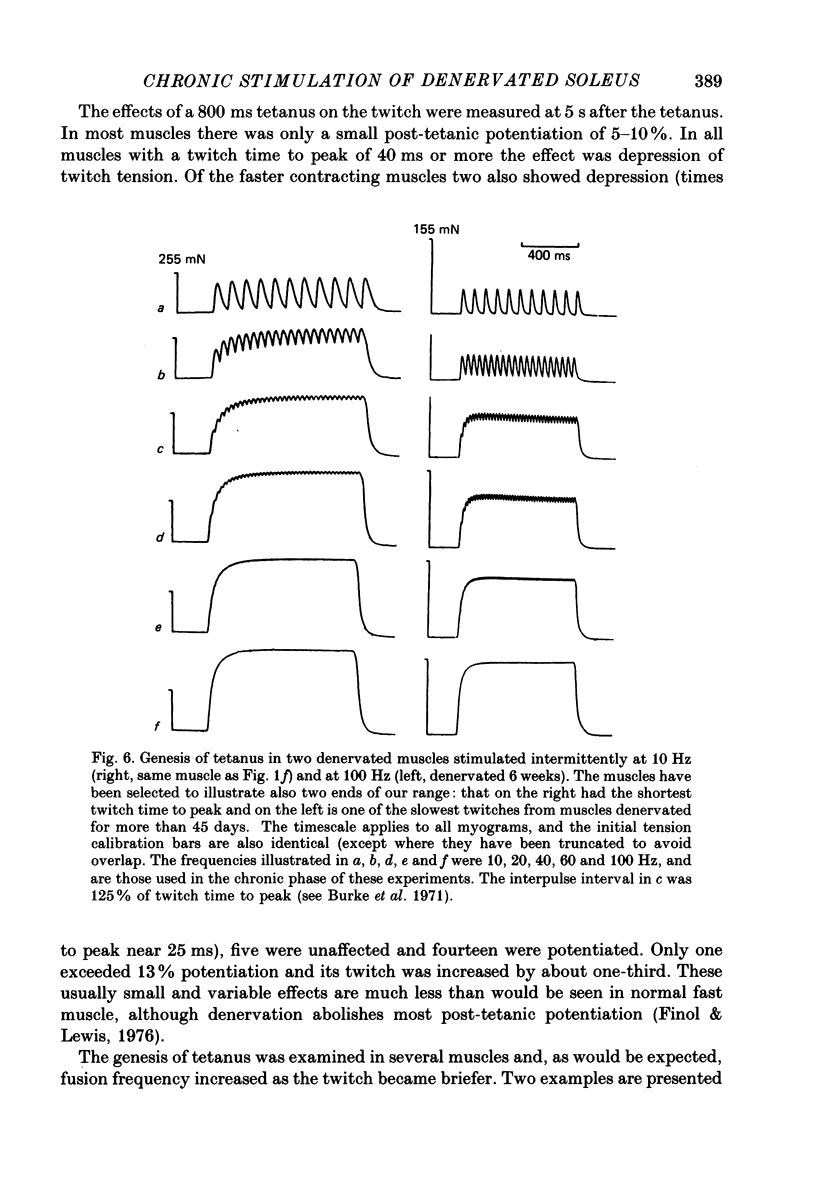
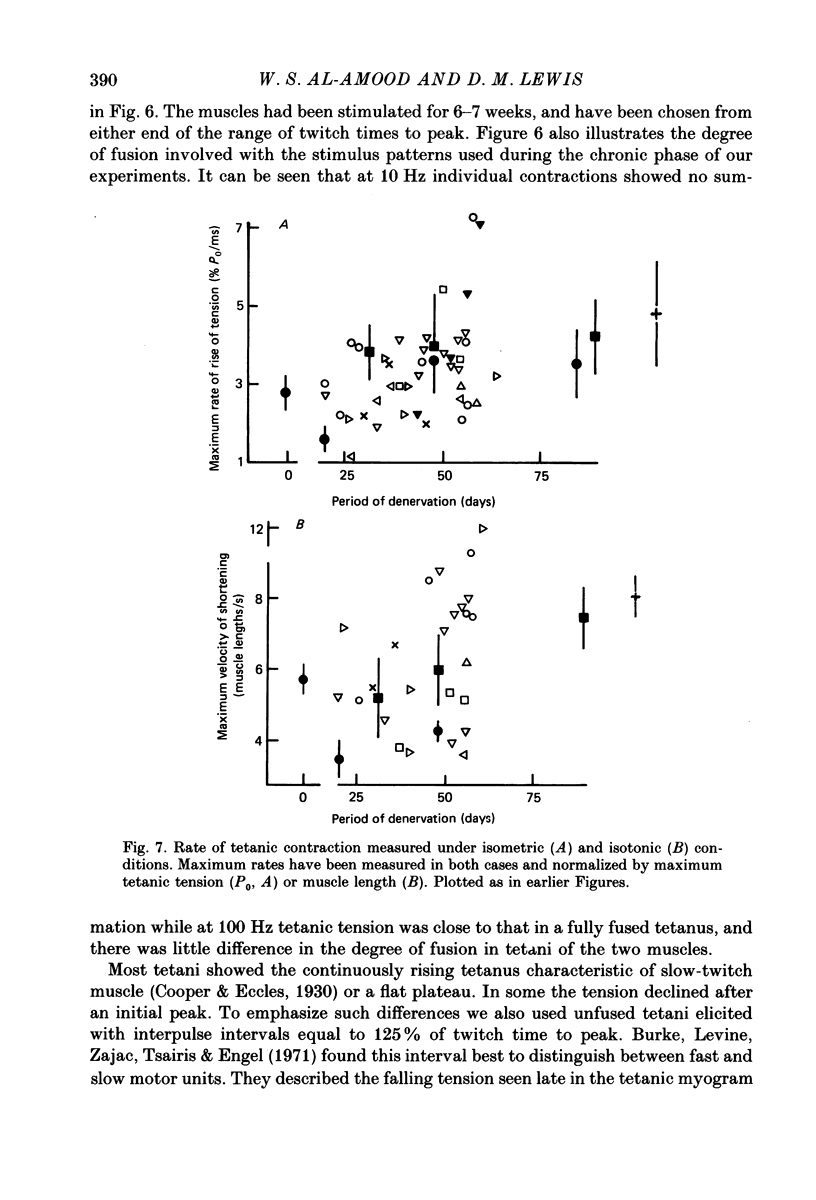
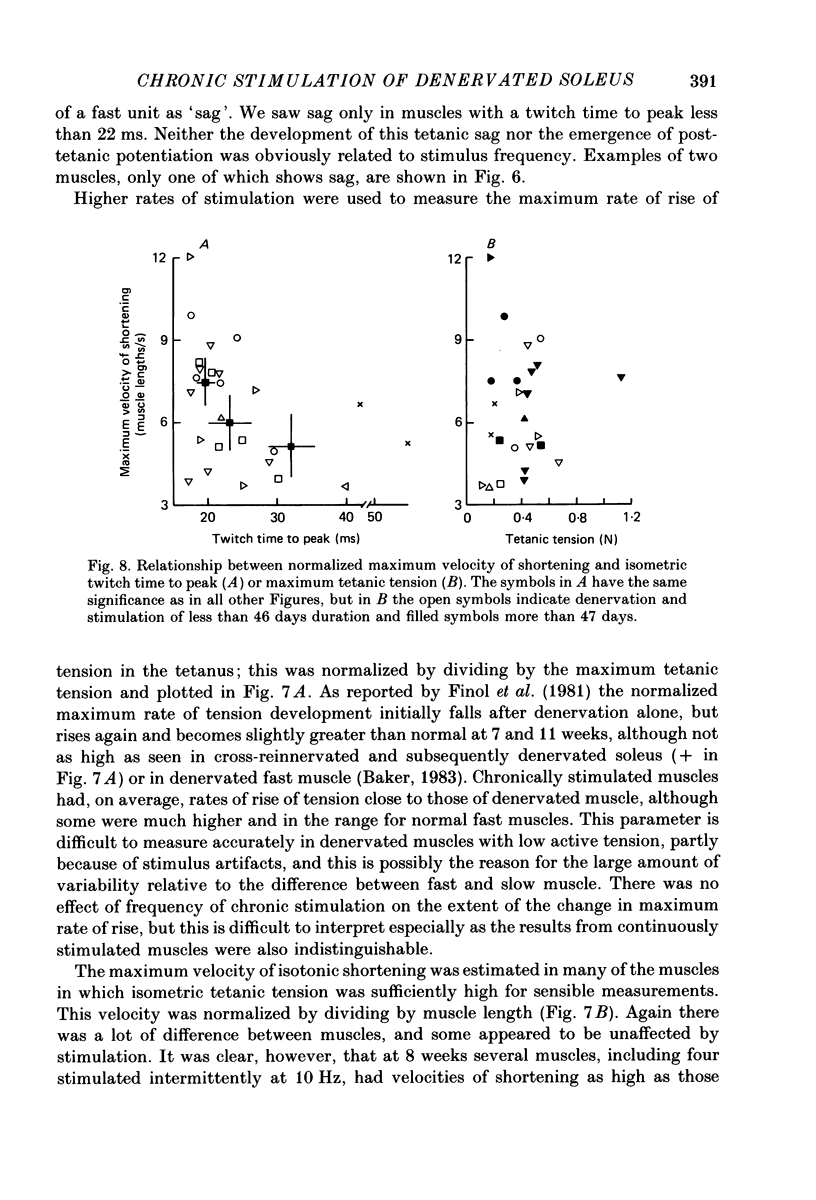
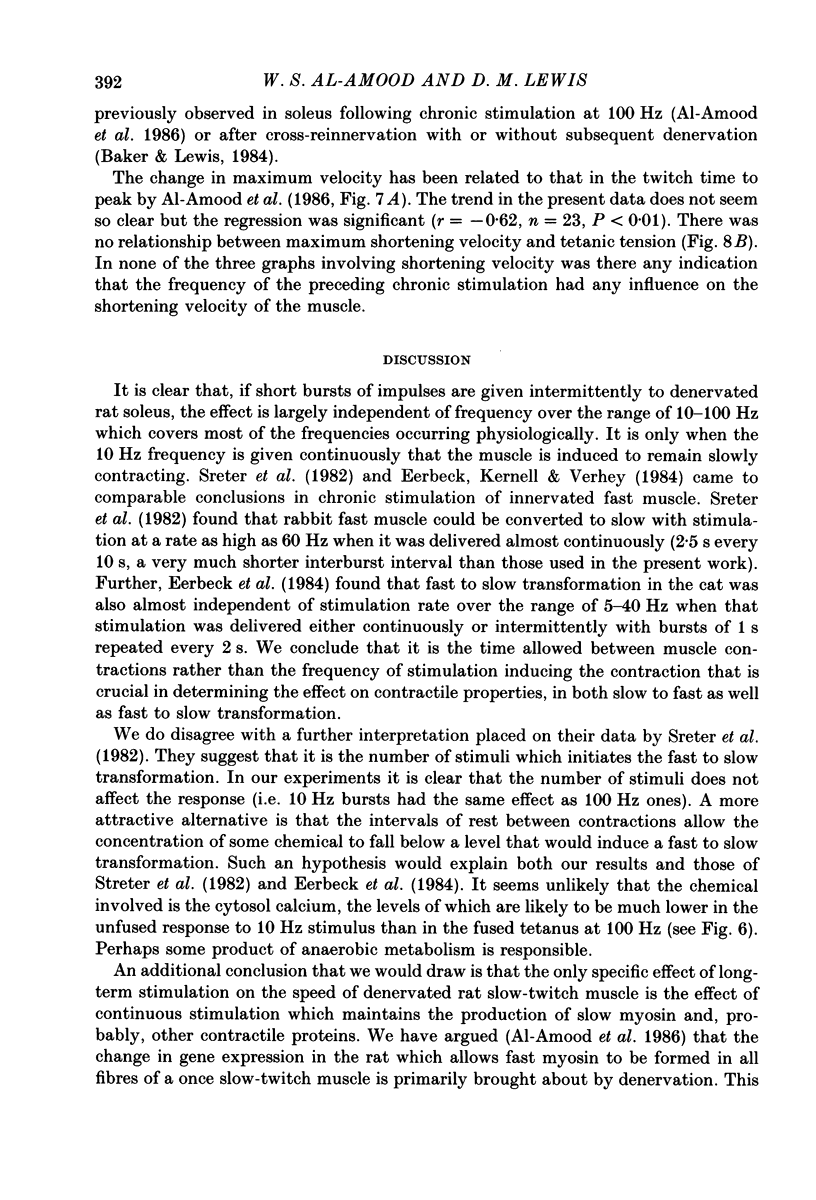
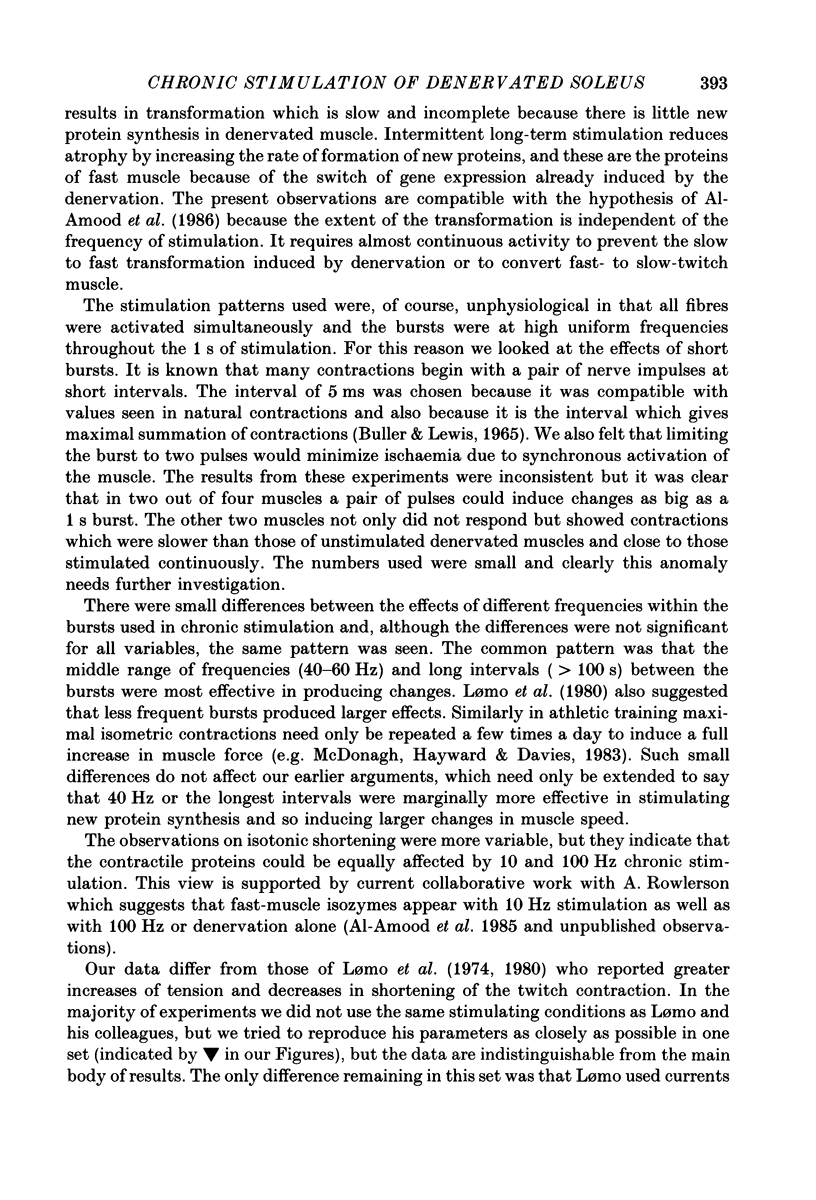
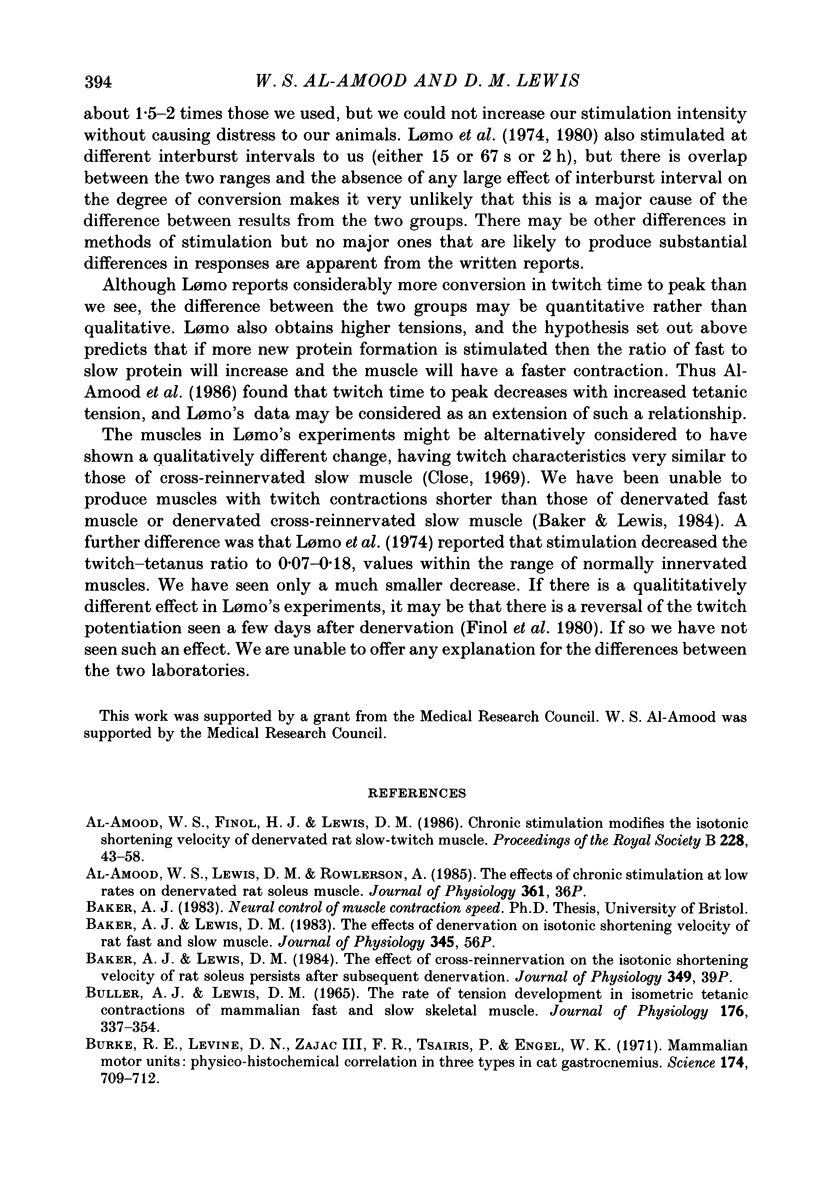
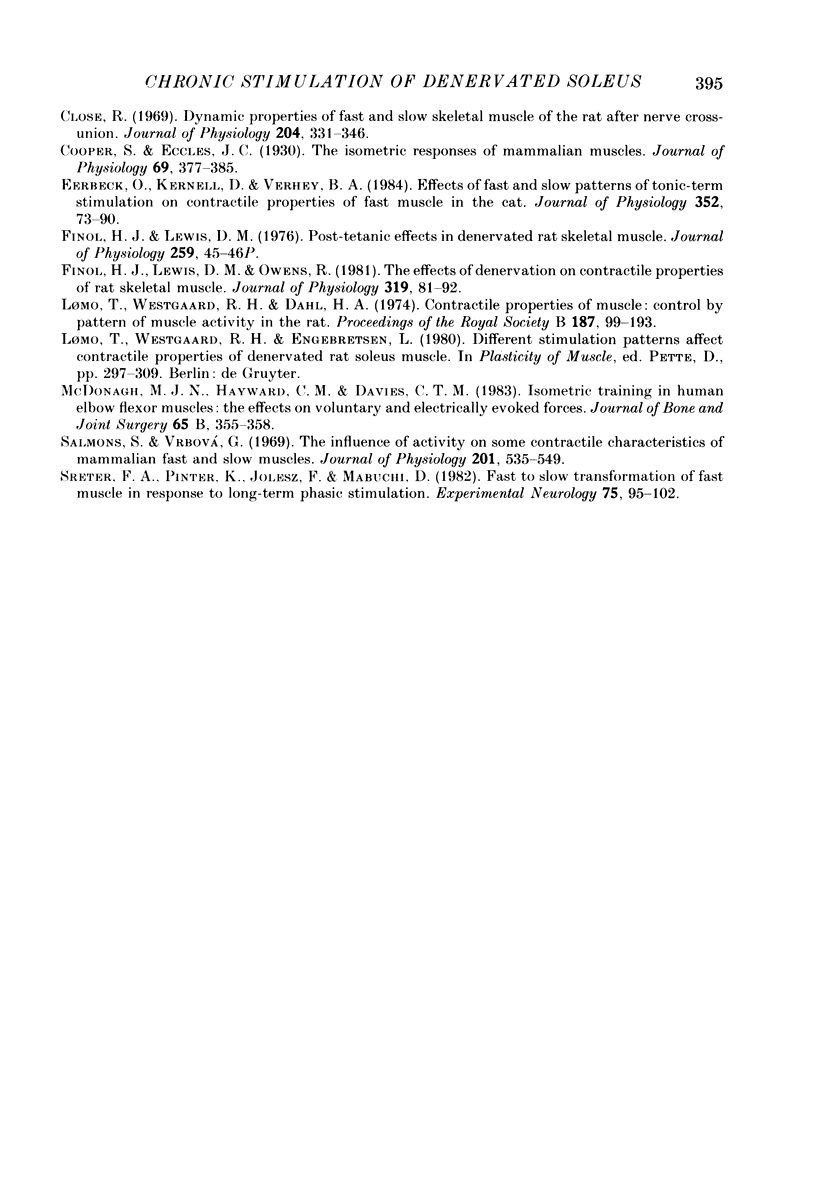
Images in this article
Selected References
These references are in PubMed. This may not be the complete list of references from this article.
- Al-Amood W. S., Finol H. J., Lewis D. M. Chronic stimulation modifies the isotonic shortening velocity of denervated rat slow-twitch muscle. Proc R Soc Lond B Biol Sci. 1986 Jun 23;228(1250):43–58. doi: 10.1098/rspb.1986.0039. [DOI] [PubMed] [Google Scholar]
- BULLER A. J., LEWIS D. M. THE RATE OF TENSION DEVELOPMENT IN ISOMETRIC TETANIC CONTRACTIONS OF MAMMALIAN FAST AND SLOW SKELETAL MUSCLE. J Physiol. 1965 Feb;176:337–354. doi: 10.1113/jphysiol.1965.sp007554. [DOI] [PMC free article] [PubMed] [Google Scholar]
- Burke R. E., Levine D. N., Zajac F. E., 3rd Mammalian motor units: physiological-histochemical correlation in three types in cat gastrocnemius. Science. 1971 Nov 12;174(4010):709–712. doi: 10.1126/science.174.4010.709. [DOI] [PubMed] [Google Scholar]
- Close R. Dynamic properties of fast and slow skeletal muscles of the rat after nerve cross-union. J Physiol. 1969 Oct;204(2):331–346. doi: 10.1113/jphysiol.1969.sp008916. [DOI] [PMC free article] [PubMed] [Google Scholar]
- Cooper S. The isometric responses of mammalian muscles. J Physiol. 1930 Jun 27;69(4):377–385. doi: 10.1113/jphysiol.1930.sp002657. [DOI] [PMC free article] [PubMed] [Google Scholar]
- Eerbeek O., Kernell D., Verhey B. A. Effects of fast and slow patterns of tonic long-term stimulation on contractile properties of fast muscle in the cat. J Physiol. 1984 Jul;352:73–90. doi: 10.1113/jphysiol.1984.sp015278. [DOI] [PMC free article] [PubMed] [Google Scholar]
- Finol H. J., Lewis D. M., Owens R. The effects of denervation on contractile properties or rat skeletal muscle. J Physiol. 1981;319:81–92. doi: 10.1113/jphysiol.1981.sp013893. [DOI] [PMC free article] [PubMed] [Google Scholar]
- Finol H. J., Lewis D. M. Proceedings: Post-tetanic effects in denervated rat skeletal muscle. J Physiol. 1976 Jul;259(1):45P–46P. [PubMed] [Google Scholar]
- Lomo T., Westgaard R. H., Dahl H. A. Contractile properties of muscle: control by pattern of muscle activity in the rat. Proc R Soc Lond B Biol Sci. 1974 Aug 27;187(1086):99–103. doi: 10.1098/rspb.1974.0064. [DOI] [PubMed] [Google Scholar]
- McDonagh M. J., Hayward C. M., Davies C. T. Isometric training in human elbow flexor muscles. The effects on voluntary and electrically evoked forces. J Bone Joint Surg Br. 1983 May;65(3):355–358. doi: 10.1302/0301-620X.65B3.6841411. [DOI] [PubMed] [Google Scholar]
- Salmons S., Vrbová G. The influence of activity on some contractile characteristics of mammalian fast and slow muscles. J Physiol. 1969 May;201(3):535–549. doi: 10.1113/jphysiol.1969.sp008771. [DOI] [PMC free article] [PubMed] [Google Scholar]
- Sreter F. A., Pinter K., Jolesz F., Mabuchi K. Fast to slow transformation of fast muscles in response to long-term phasic stimulation. Exp Neurol. 1982 Jan;75(1):95–102. doi: 10.1016/0014-4886(82)90009-7. [DOI] [PubMed] [Google Scholar]



